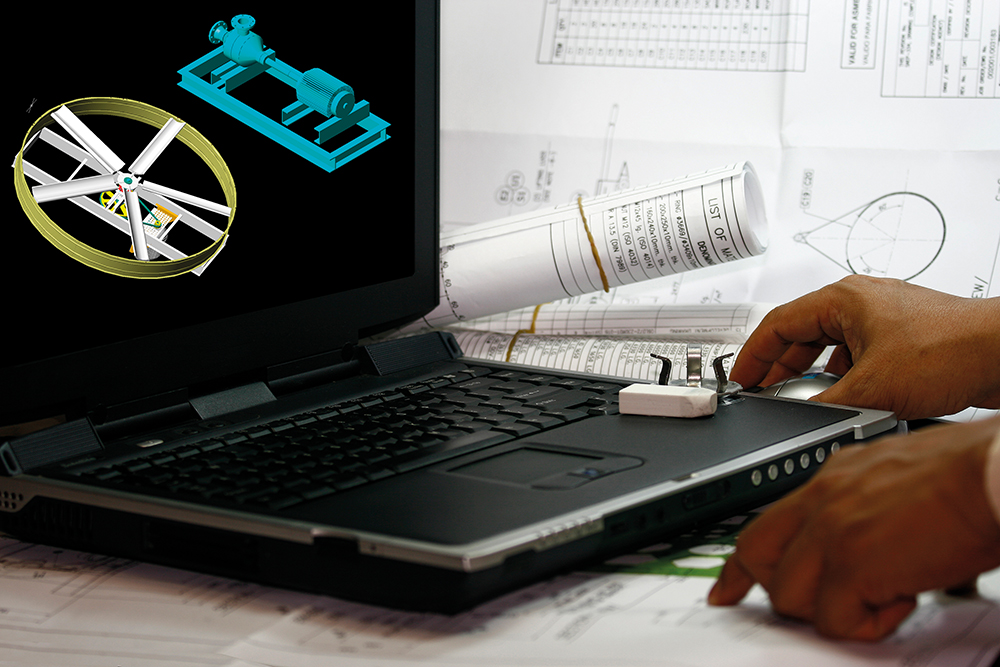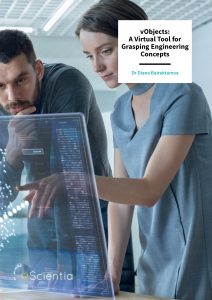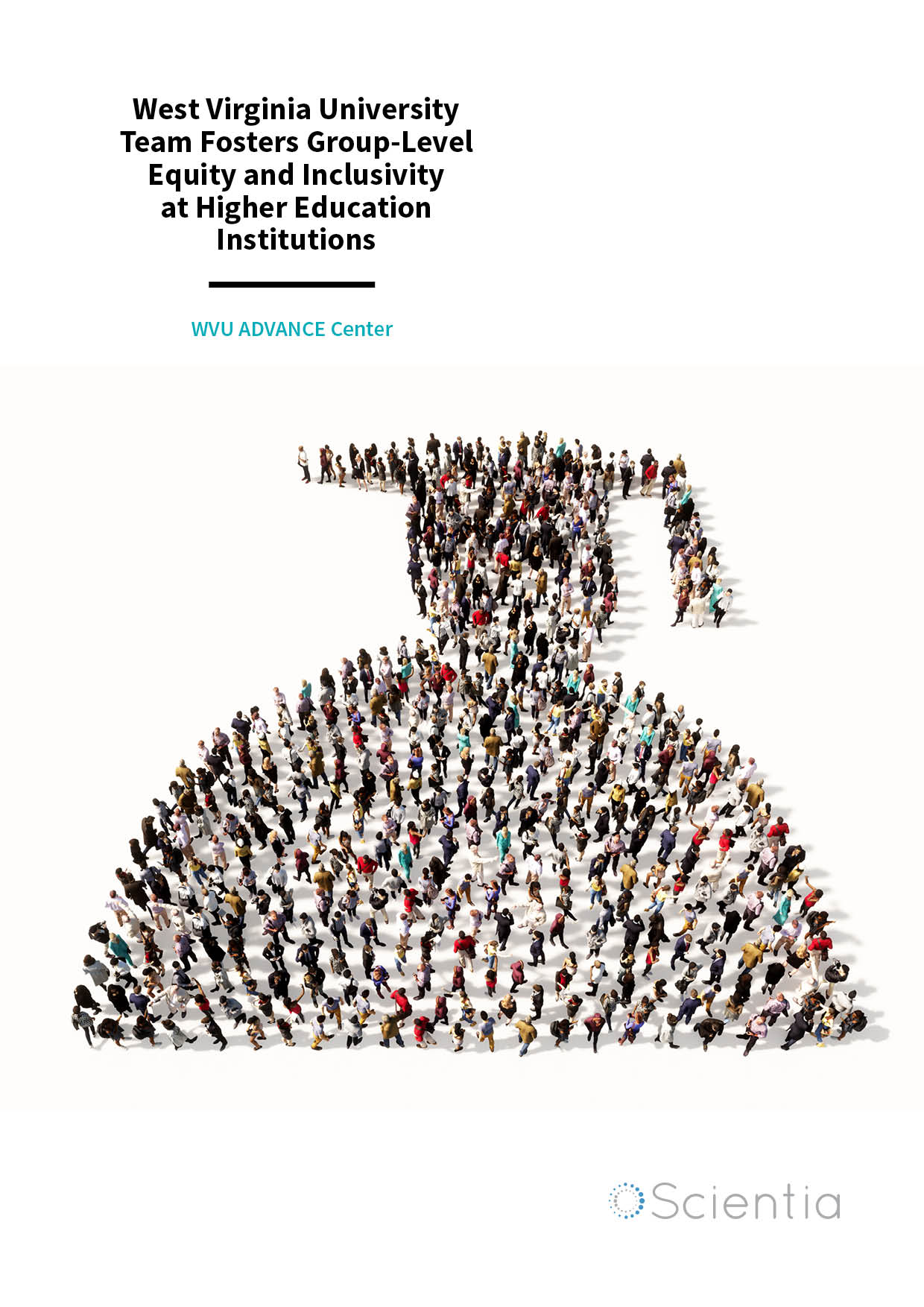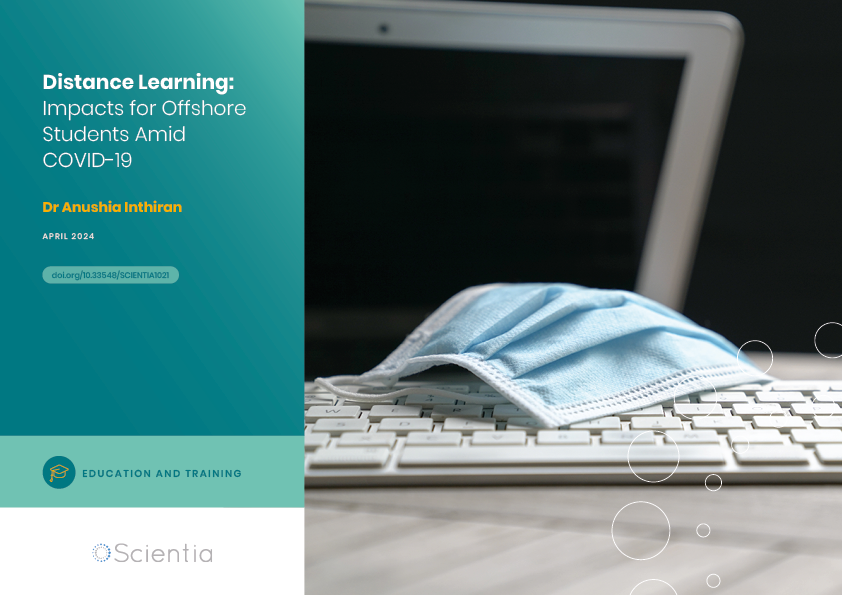Dr Diana Bairaktarova – vObjects: A Virtual Tool for Grasping Engineering Concepts
Engineering students can benefit greatly from interacting with physical objects whose attributes mimic those of real-world systems. So far, however, objects that do this effectively have proven to be extremely difficult to create. To solve the problem, Dr Diana Bairaktarova at Virginia Tech suggests that taught engineering courses could recreate practical situations more reliably using virtual objects, or ‘vObjects’. If her approach becomes widely adopted, it could transform how engineering students learn to apply their skills to complex, often unpredictable scenarios.
Preparing Engineering Students
From civil to electrical, the broad field of engineering encompasses a diverse variety of different areas, each of which presents its own unique set of challenges. As students come to grasp the founding principles of their chosen field, many factors of the education process are critical in ensuring success in their future careers.
Acknowledging this, Dr Diana Bairaktarova and her colleagues at Virginia Tech are identifying effective ways to prepare engineering students to tackle the complex, real-world challenges they will face in their future careers. ‘Through my research, I am building and strengthening our understanding of the professional formation of engineers by contributing to the knowledge of how the engineering learner develops professional skills, knowledge, and abilities,’ she explains.
Perhaps one of the most significant challenges faced by Dr Bairaktarova and others in her field is the difficulty presented by translating the abstract ideas taught in lectures into skills for guiding real-world situations. Problems that students work on in their studies tend to have well-defined parameters and rigid, pre-set solutions, but everyday problems faced by real engineers are usually far more complex and ambiguous. In order to prepare students for these realities, Dr Bairaktarova advocates the need for a more hands-on approach to engineering education. However, this poses its own further challenges.
Solutions with Physical Objects
In any science-related teaching course, students can benefit greatly from physical demonstrations of the concepts they learn in their lectures – particularly through projects and experiments that they carry out themselves. This holds particularly true for engineering students, as regardless of their specialisation, they will almost certainly need to deal with tangible objects in some form in their future careers. Yet despite these advantages, incorporating such objects into learning programs is no easy task, for a number of reasons.
As they overcome obstacles, it is critical for real engineers to consider how the physical objects they interact with are influenced by a variety of different factors, and how their decisions can have widely varied outcomes. This makes it particularly difficult for students to translate the attributes of physical objects into useful knowledge about such abstract real-world problems. In addition, physical objects will often need to be large and complex, and may even risk safety. Overall, these issues call for more innovative approaches to how demonstrations can be made in engineering courses.

Introducing vObjects
In the face of these challenges, Dr Bairaktarova proposes that engineering students’ education could be enhanced through interactions with virtual objects, whose attributes accurately translate to real-world effects.
Through efforts to realise this goal, she and her colleagues have now created a tool for building ‘vObjects’ – simulated 2D and 3D objects including boilers, fans, drains, turbines, generators and condensers, whose behaviours, shapes and functions all mimic their real-world counterparts. Furthermore, the team has incorporated vObjects into a ‘Virtual Learning Environment’, which also includes features such as equations and datasets. This virtual tool enables students to account for the impact of their engineering decisions on the physical, economic, social and political environments of the different geographical regions where their engineered system can be applied.
This virtual tool gives students access to reliable simulations of real physical components, enabling them to study and design systems in the mindset of a real engineer. ‘Our vObjects learning environment contributes to the situated perspective on learning by closely mapping the learner experience to a real-life scenario,’ Dr Bairaktarova says. ‘It adds value in traditional education as well as in a variety of energy science and fundamental engineering courses by bringing back the laboratory experience to courses that traditionally apply lecture-based instruction.’
Translating to Real-world Situations
Having developed vObjects and the Virtual Learning Environment, the team’s next goal is to determine how effective they are at enabling engineering students to truly grasp the concepts they learn in lectures.
To quantify the effectiveness of vObjects, Dr Bairaktarova and her colleagues are now considering how they could be used to solve problems posed by thermodynamics: the physical field describing how heat and temperature relate to factors including energy, radiation, and the properties of matter.
For engineers, the equations conveying the founding principles of thermodynamics are particularly abstract, making it one of the most notoriously difficult theories to apply to their work. For vObjects to succeed in this case, students would need to be able to use the Virtual Learning Environment to visualise how such abstract concepts apply to the real world, and then, to apply their skills to design effective systems.
‘I am engaging in research with undergraduate and graduate students, educators and practitioners at the intersection of mechanical engineering, learning sciences, cognitive psychology, and engineering education, with the overarching goal of graduating ethical, empathic and creative professionals.’

Designing Virtual Power Plants
To test the true capabilities of vObjects and the Virtual Learning Environment, Dr Bairaktarova and her colleagues have now designed an experimental task, which tests the skills of undergraduate mechanical engineering students.
The task involves assuming the role of a global project manager proposing a design for a power plant in one of three developing countries – either Jamaica, Panama, or Rwanda. Since each of these nations struggle with persistent energy problems, such a project would require an in-depth understanding of the influence of thermodynamics on real-world systems, and also requires students to account for a wide variety of factors that are not usually considered in the engineering classroom.
The students will likely be well accustomed to considering the actual design aspects of their power stations, which are strongly tied to the principles of thermodynamics. These include the total power the plant requires, the energy generated by its turbines, inputs from pumps and compressors, steam and gas flow rates, and the plant’s overall efficiency. As well as these considerations, however, the students will need to tailor their designs, and their application of thermodynamics, to the specific requirements of Jamaica, Panama and Rwanda in an energy generation context.
Among these factors are economic aspects such as GDP, inflation and the value of imports and exports; geographic aspects including population, land and water area, and average temperature; and energy-related aspects including a nation’s consumption and production, and the proportion of its population without electricity.
Assessing Student Interactions with vObjects
In their research, Dr Bairaktarova and her colleagues asked a group of undergraduate students, enrolled in an engineering thermodynamics course, to complete the task over a 12-week project. Afterwards, the students delivered their results in a written proposal. Then, in the second year of the study, students completed the task using vObjects and the Virtual Learning Environment – and supplemented their written proposal with 3D models of their power stations, designed using vObjects.
Practicing engineers in the energy field are currently evaluating the students’ projects from both groups. The engineers are blind to the group conditions. At the end of the study, Dr Bairaktarova’s team will ask the students about four different aspects of their approach to the project. Firstly, the researchers will ascertain whether the students found that vObjects enhanced their learning of the difficult and abstract engineering concepts involved in the project. Secondly, they will ask the students whether the digital environment of vObjects supported their methods for solving the problems involved, which did not have any pre-set parameters or solutions.
Third, they will determine which of the characteristics of the Virtual Learning Environment, including its incorporated equations, testing capabilities, and vObject manipulation, made it easier for the students to solve these less-rigid problems. Finally, they will quantify whether differences in skill and demographic between individual students influenced how they interacted with vObjects.

Transforming Engineering Education
If the students respond positively to vObjects and the Virtual Learning Environment, Dr Bairaktarova hopes that she will be in a strong position to promote their wider integration into many more engineering-related courses in the long term. Ultimately, she envisages that vObjects and the Virtual Learning Environment will become an ingrained aspect of engineering courses worldwide and could greatly improve many students’ career prospects.
‘I am engaging in research with undergraduate and graduate students, educators and practitioners at the intersection of mechanical engineering, learning sciences, cognitive psychology, and engineering education, with the overarching goal of graduating ethical, empathic and creative professionals,’ she concludes.
Dr Bairaktarova now hopes that further advances in technology will allow vObjects to simulate real-world situations even more reliably, while becoming even more accessible to students across many different disciplines. If achieved, this could allow vObjects to equip a new generation of engineers to thrive under the challenges they will face in an increasingly complex modern world.
SHARE
DOWNLOAD E-BOOK
LISTEN TO THE AUDIO
REFERENCE
https://doi.org/10.33548/SCIENTIA504
MEET THE RESEARCHER
 Dr Diana Bairaktarova
Dr Diana Bairaktarova
Department of Engineering Education
Virginia Polytechnic Institute and State University
Blacksburg, VA
USA
Dr Diana Bairaktarova completed her PhD in Engineering Education at Purdue University in 2013, after more than 15 years of experience as a Design and Manufacturing Engineer. She joined Virginia Tech as assistant professor in 2015, and is now driven to use innovative technologies to study novel user interfaces, virtual and augmented learning and working environments that encompass human aspects at the cognitive, eye-tracking and sensory-motor levels. Her current projects include the development of learning environments, investigating the role of individual aptitudes and abilities in performing and learning engineering through psychometric instruments and experimental interventions. Dr Bairaktarova is particularly dedicated to the education of engineering students, and promotes the importance of equipping them for the complex, real-world challenges they will inevitably face in their future careers.
CONTACT
E: dibairak@vt.edu
W: https://enge.vt.edu/People/researchfaculty/dbairaktarova.html
KEY COLLABORATORS
Dr Scott Huxtable
Co-PI of the project
Dr Scott Huxtable is an Associate Professor of Mechanical Engineering at Virginia Tech. He received his BS in Mechanical Engineering from Bucknell University and his MS and PhD also in Mechanical Engineering from the University of California at Berkeley. His research interests include nanoscale thermal transport, energy harvesting, phase change materials, and engineering education.
Mr Sathyanarayanan Subramanian
Graduate research assistant working on the project
Mr Sathyanarayanan Subramanian recently graduated with master’s degree from the Department of Mechanical Engineering at Virginia Tech. Mr Subramanian was the developer of vObjects and his involvement in the research was instrumental for the study. Mr Subramanian is now employed by Kosh Industries working as CFD Engineer.
FUNDING
This work is funded by National Science Foundation (NSF), Division of Undergraduate Education (DUE) under: DUE #1712210, Collaborative Research: vObjects – Understanding their Utility to Enhance Learning of Abstract and Complex Engineering Concepts.
The contents of this article do not necessarily reflect the views and opinions of the funding agency.

REPUBLISH OUR ARTICLES
We encourage all formats of sharing and republishing of our articles. Whether you want to host on your website, publication or blog, we welcome this. Find out more
Creative Commons Licence (CC BY 4.0)
This work is licensed under a Creative Commons Attribution 4.0 International License. 
What does this mean?
Share: You can copy and redistribute the material in any medium or format
Adapt: You can change, and build upon the material for any purpose, even commercially.
Credit: You must give appropriate credit, provide a link to the license, and indicate if changes were made.
SUBSCRIBE NOW
Follow Us
MORE ARTICLES YOU MAY LIKE
WVU ADVANCE Center | West Virginia University Team Fosters Group-Level Equity and Inclusivity at Higher Education Institutions
Despite ongoing efforts to broaden participation in the academy, many groups remain underrepresented. More needs to be done to ensure that all faculty and students succeed in institutions of higher education. The WVU ADVANCE Center is an academic hub at West Virginia University, which provides services, events, mentorship opportunities, and other initiatives that promote the sense of belonging that leads to thriving faculty and students.
Professor Martin Trefzer | Bridging Nature and Artificial Intelligence for Smart Electronics Technology
The ever-developing world of artificial intelligence (AI) stands at the tip of a transformative breakthrough. Professor Martin Trefzer from the University of York and Professor Jim Harkin from Ulster University have introduced a revolutionary approach to neural network design. They work on an electronic system based on AI that forms the basis of the cross-disciplinary project called Nervous Systems, which aims to build electronic neuromorphic devices with an artificial intelligence system mirroring the adaptability and responsiveness of biological neural systems.
Dr Jon Tore Lieng | Dynamically Installed Anchors for Floating Offshore Turbines
Effectively harnessing offshore wind presents a valuable opportunity to increase energy supplies. Floating wind turbines present several advantages over traditional fixed turbines in more shallow waters. Dr Jon Tore Lieng from Deep Sea Anchors and colleagues have developed a type of dynamically installed anchor to hold the structures in place while reducing both the costs and complexity associated with installation where cohesive seabed sediments are realised.
Dr Anushia Inthiran | Distance Learning: Impacts for Offshore Students Amid COVID-19
The COVID-19 pandemic significantly disrupted global education and necessitated a shift to online learning. Due to ongoing border closures, even after the pandemic eased, offshore students were prevented from attending their university in person long after their local peers, impacting their learning ability and future perspectives. Dr Anushia Inthiran from the University of Canterbury conducted a survey among a group of offshore students to understand the consequences of distance learning on their education.





